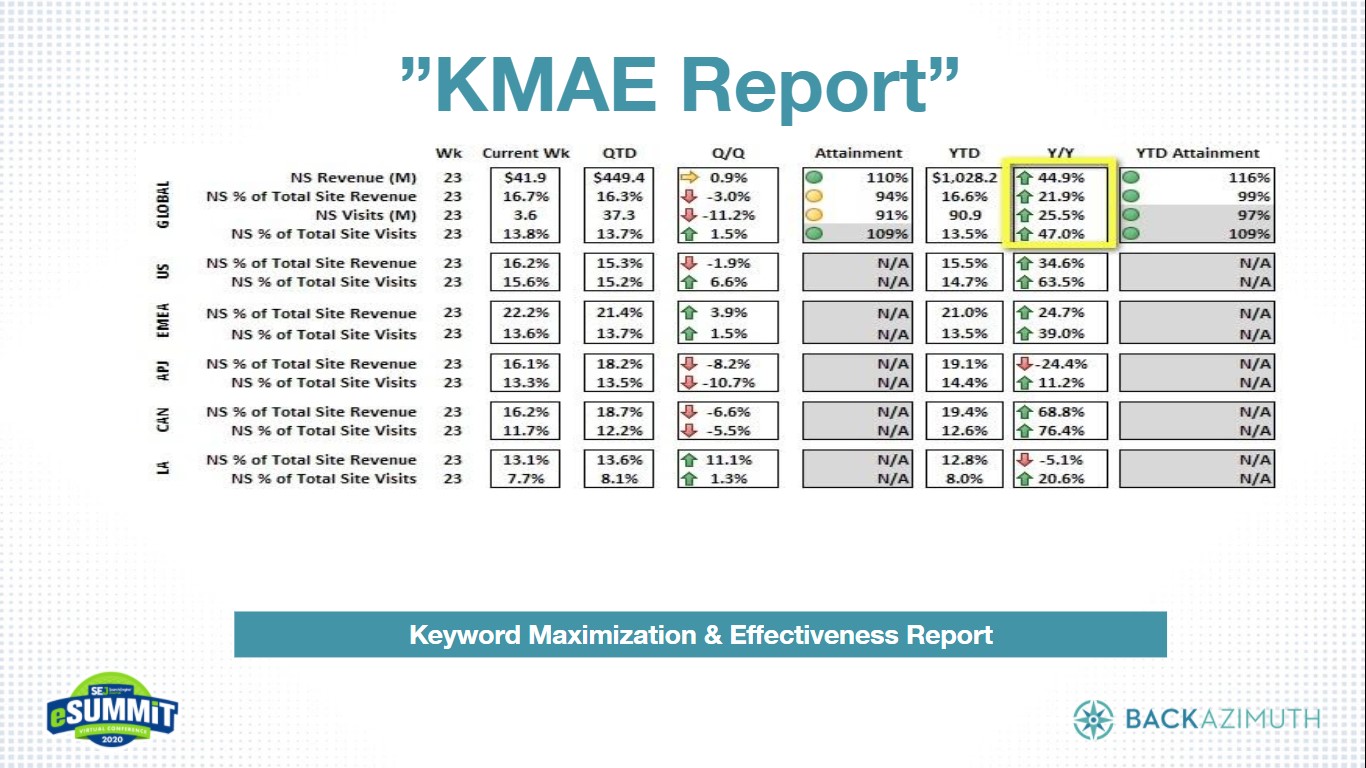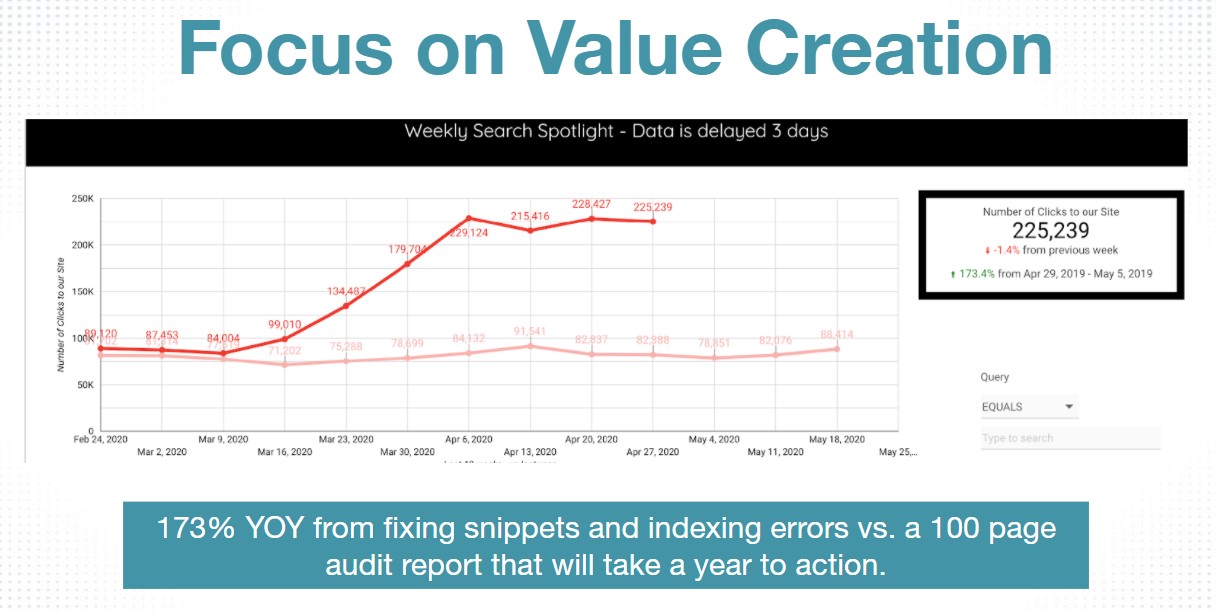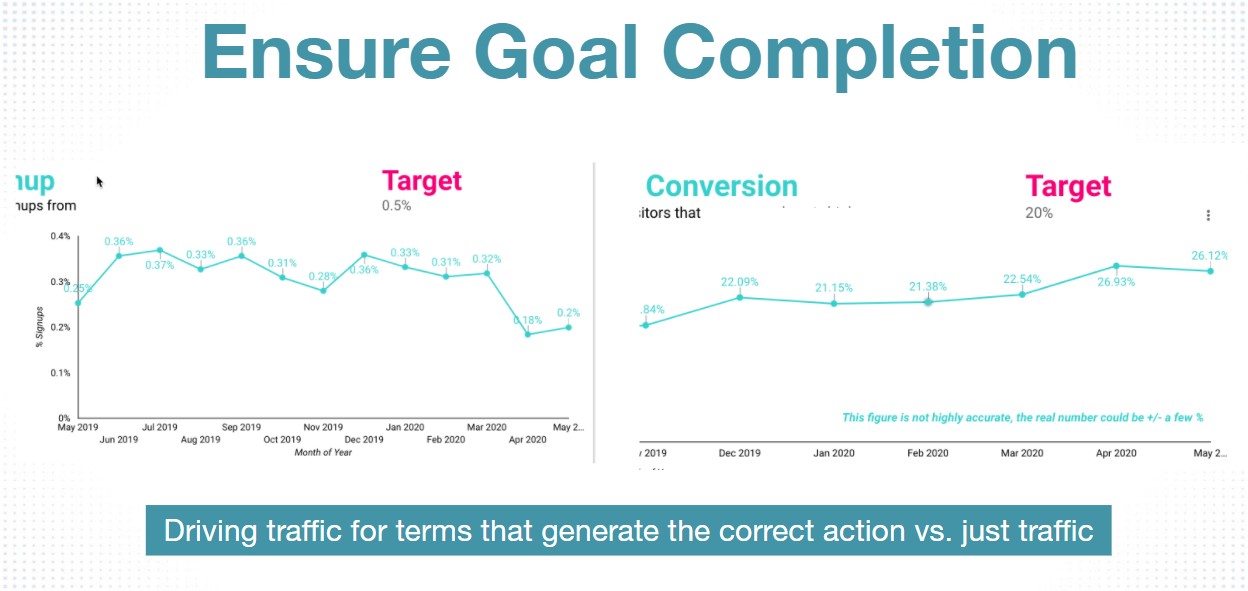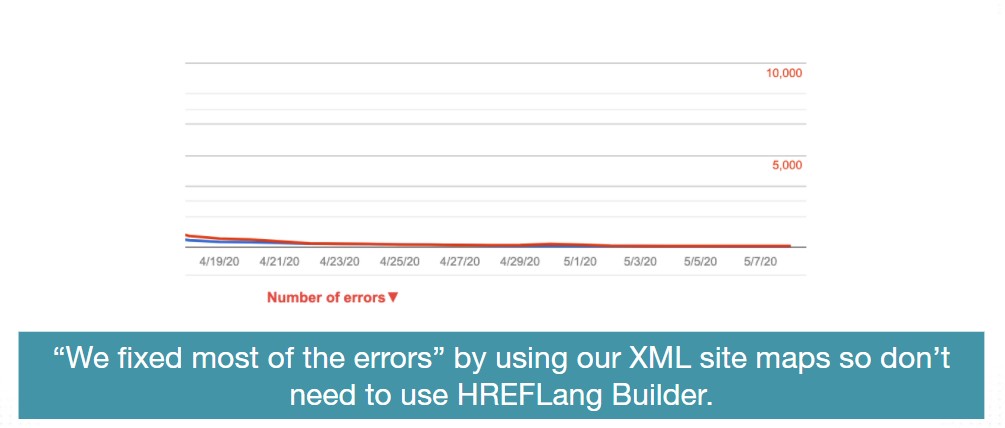26 Aug Thinking Outside the SEO Box: How to Find Global Opportunities Now via @lorenbaker
Keeping your business afloat during difficult times is challenging – but it can be done.
For his SEJ eSummit keynote, Bill Hunt, President of Back Azimuth Consulting, tapped into his 25 years of digital marketing experience to offer actionable tactics on how businesses and agencies can not only survive the new normal, but thrive.
He illustrated how you can start thinking outside of the SEO box and utilize your existing technical skills to pitch and implement ideas that deliver results your customer, client, or boss need right now.
Here’s a recap of his keynote.


The pandemic has pushed the U.S. and many other countries into recession.
Right now, one of the big challenges SEO professionals and agencies face is that clients have to decide where to spend the money.
The last place you want to be is having a client call you and tell you that they have to cut you loose because they didn’t feel the value.
This is why it’s important to think of ways how you can communicate and show the value of your services upfront.
Always Show Them the Money
Even if you’re doing so much for your clients’ campaigns, if they’re not aware of it, they won’t appreciate it.
Bill shared his experience when a client called him up and said “I’m not feeling love. I need to come up and talk to you about it.”
His entire company came together to listen to what the client had to say: what they did well and what they did poorly.
The client then said, “Look, your only job is to deliver results that keep my ass employed.”
That was Bill’s epiphany moment.
The bottom line is, we, as SEO agencies and services providers, are a tool in our clients’ toolbox and we are a key part of making them successful.
To address the client’s concern, Bill and his team came up with a Keyword Maximization and Effectiveness (KMAE) report.


The KMAE report will show how much business value your team is delivering to clients.
They could care less how many words they’re ranking number one and even how much traffic we drove.
It was how much revenue you’re driving.
That’s the number one metric you want to show clients.
Once Bill and his team really started delivering on this key KPI, by week 23 of the year, they had hit 116% of the year to date goal attainment.
The 25% increase in natural search traffic they had achieved also increased SEO revenue by 45%.
It would be pretty hard for a client to come and tell your agency they’ve got to cut you loose when you’ve achieved these kinds of results.
And they were able to do this by focusing on really what moved the needle and what drove people to convert.
Make sure you’re delivering economic value.
Economic value is the amount someone is willing to pay for a good or service that creates value bearing in mind that the money could be spent on something else.
There are two ways of how value is perceived:
- Monetary value: The amount actually paid for the service.
- Perceived value: The perception of the contribution of the service to increase revenue.
The idea of perceived value is really what we have to focus on.
This is an example of a project Bill and his team handled.
They kicked it off as a stereotypical project covering keyword work and an audit.


Looking at the dates, they were actually coming into the COVID-19 window when everybody was panicking.
And so, they decided to put all the normal tasks aside and just try to fix issues errors.
They went in and began fixing snippets – doing things that they could actually tie back to a goal.
They hit a 173% increase over the previous year doing things that would actually move the needle.
The audit found many other things that are going to take as much as a year to get fixed.
But traffic doesn’t necessarily matter, so they looked at two other goals.


The decline on the left is for subscriptions.
Bill’s team wasn’t delivering people who were going to sign up as it was a hard target.
The client already expected 99.5% would not even do this as a goal, so automatically it was a disadvantage.
The other is conversions.
Not only did they reach the 20% goal, but they were at 26% because they not just focused on driving traffic, but words that drove conversion.
It’s important to focus on goal completion.
But sometimes when you over-focus on these goals, you run into a problem where you are sometimes blinded by that goal.


Here’s a screenshot of another agency’s report. One of the things they were trying to do is get their hreflang errors down to zero.
But it didn’t look right.
How did they get to zero when many of the things that were wrong weren’t fixed yet?


The red box is what the agency had honed in on. And they were absolutely correct that the errors had went down almost to zero.
If you look to the left side of the arrow, you’ll see the blue line was actually at about 300,000, hreflang tags at its peak.
If you follow the blue arrow, you’ll notice that at the red line, the errors were going down – and so was the number of hreflang tags to the point where you had so few hreflang tags that there were no errors.
If you don’t have hreflang tags, the first thing that’s going to happen is you’re going to start getting canonical errors, which is exactly what happened.
When Bill’s team tried to figure out why these errors were going down, they realized that the way the other agency was building the XML sitemaps using the Excel method was actually missing most of the pages about 90%.
And because 90% of the pages were missing, it was actually causing the canonical error.
So Google was taking, in some cases, the UK page, and showing it in Australia.
And when an Australian person came into the page, they were seeing a price in British pounds, or they might be seeing something in Mexican pesos.
The client was able to track this back that customers were coming in and abandoning.
This problem cost about $20 million in lost sales – all because the wrong goal was looked at and the agency wasn’t seeing the big picture of the goal.
This is something that most people overlook.
It’s great that Google indexed your page, but is it the right page?
The Takeaway
Always Deliver Performance
Ensure you are always moving the needle for your projects.
Start with the goals and work backwards to fix opportunities.
Team Augmentation
Bill’s suggestion is to use the skills your team has for services other than what you do, to support clients.
A few ways to go about this:
- See if clients can use your team to fill in for DevOps.
- Make sure you understand their workflow and systems.
- Use flexible Scope of Work – money already allocated.
Don’t Be Afraid to Pivot
“A pivot is a change in strategy without a change in vision.” – Eric Ries
Bill encountered challenges with HREFLang Builder, a tool by Back Azimuth Consulting.
To use the tool, people can get a subscription and it was as automated as could be.
But agencies typically wanted a quick and low-cost solution to check the box for a client.
Often, they prefer one-time access vs. an ongoing contract. They have no budget to fix errors or did not want to showcase errors.
Internal dev teams, on the other hand, wanted to “build a solution” vs. using external tools needed problem to exist to justify build.
Because of this, HREFlang Builder wasn’t necessarily getting recurring revenue.
After stepping back at looking at the decision, they decided to pivot and move to direct, full-service for global ecommerce managers of large global sites.
Doing this, they had less stress and achieved their highest profitability as a company.
Look Globally
There is a global opportunity for business owners – exportation is one of those.
Bill is familiar with the topic as his graduate school thesis is “Using Big Data to Capture $1 Trillion in Missed Opportunity through Exports.”
There are many barriers to entry that interested U.S. companies encounter.
- The company must “want to export”.
- They should have a target destination.
- They also need to attend outdated seminars.
The solution Bill is proposing as part of his thesis is to find these opportunities, especially today.
Bill has this to say about finding global opportunities now:
“There’s a lot of things that we can do outside of some of the core stuff we’ve done. And it just requires us to think a little more clearly about what we want to do, why we’re doing it and if possible, how can we help other people when we do it?”
Watch This Presentation
You can now watch the video of Hunt’s full presentation from SEJ eSummit.
More Resources:

Sorry, the comment form is closed at this time.